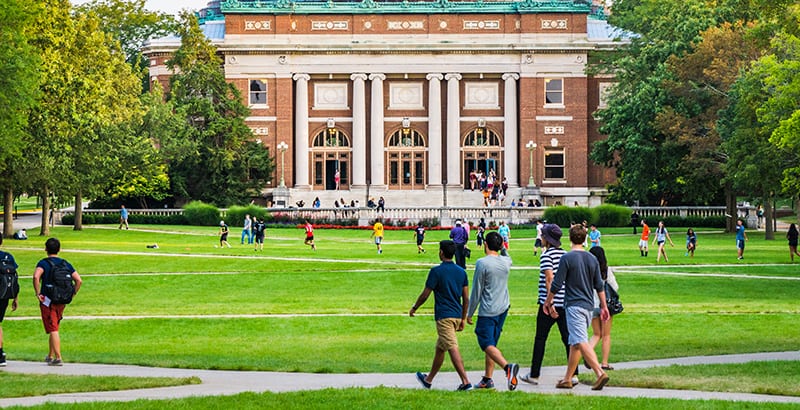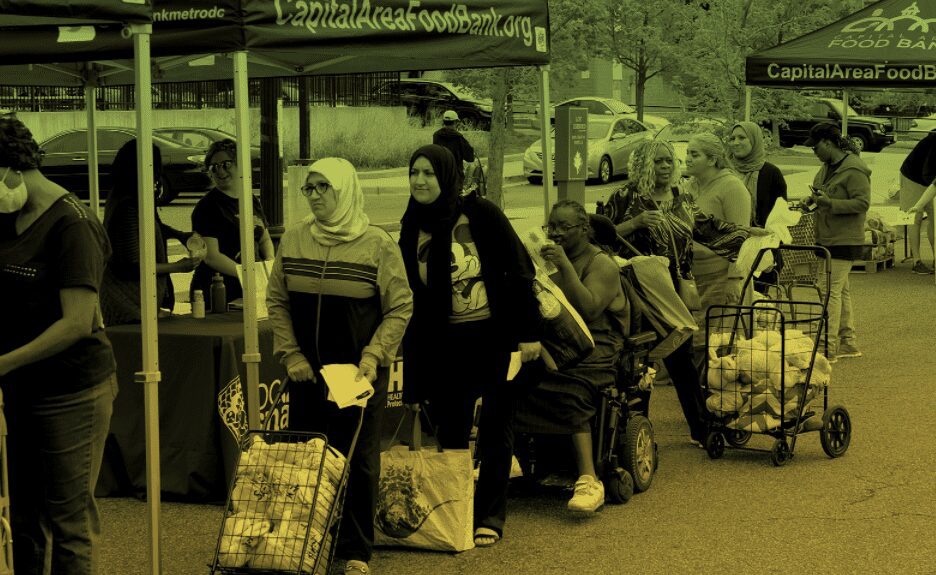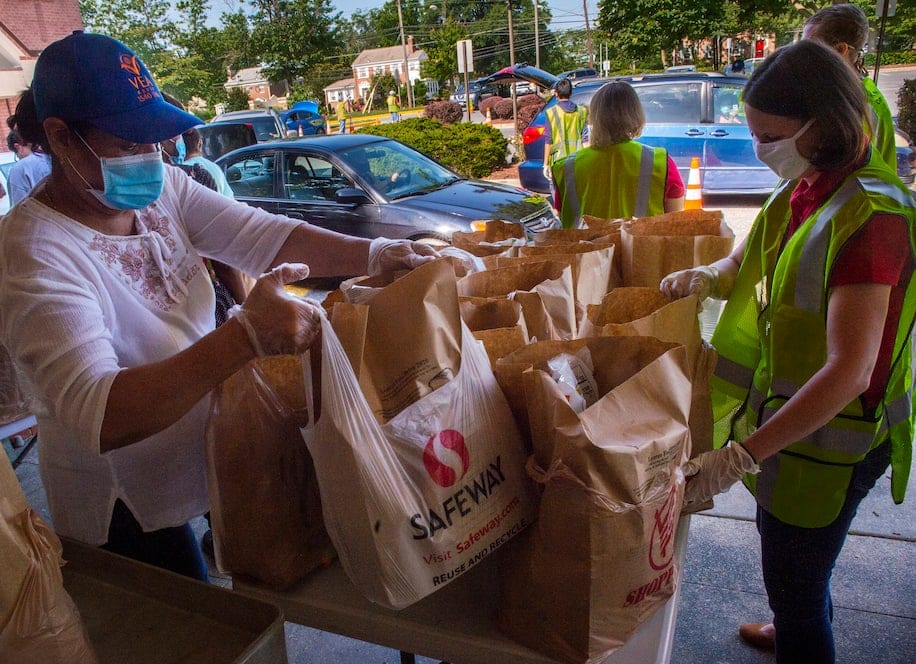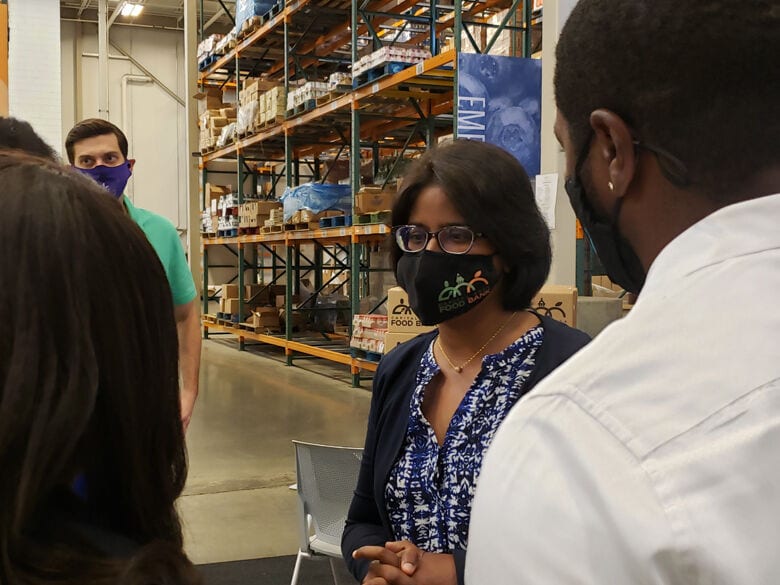Marathon runners know that getting to the finish line takes careful preparation and constant fuel, especially in the final miles. But school districts have been measuring the wrong finish line in their marathons: It’s not high school graduation, but getting to and through college. To do that, districts need to rethink how they support students, especially low-income students, in the final miles.
Focus Area: DC Initiatives
We give back to the community that has given so much to us.
Postsecondary Advising: Characteristics and Conditions for Expanding Access
Postsecondary education dramatically increases the likelihood of employment and economic success. But many young people, especially those furthest from opportunity and from underserved communities, are not accessing postsecondary pathways or realizing the benefits that come with a degree. To disrupt this inequity, we must better support students to identify, pursue, and complete college.
‘This pandemic is a blessing in disguise’ | DC Program deliveries free groceries and cooking lessons to children
WASHINGTON — 30 children and their families in DC’s most underserved communities are learning how to eat and live healthily thanks to the Virtual Foodprints program.
In a typical school year, Foodprints is an in-class program in DC schools through the nonprofit Freshfarm.
The program offers a garden to the kitchen food experience for children at 15 DCPS elementary schools to provide a variety of nutrition and gardening education, according to the organization’s website.
Hunger Report 2020
For 40 years, the Capital Area Food Bank has been addressing hunger in the Washington metropolitan area. This is an unprecedented moment in our history as COVID-19 reshapes the future of our region and the world.
Before the current pandemic, the food bank was providing 30 million meals annually, both directly and through a network of more than 450 nonprofit organizations, to nearly 415,000 people in our region experiencing food insecurity. As a client-centered and data-driven organization, we are continuously in search of information and studies to help us better respond to the needs of the people we serve. We had conceived of this report as a way to pull together the numerous but disparate data about food insecurity in the metropolitan Washington area.
Coronavirus could push 250,000 into hunger in D.C. region, report says
Up to a quarter of a million people in the Washington area could be thrown into hunger because of the novel coronavirus pandemic, according to a report by the Capital Area Food Bank, even as the amount of donated food and the number of distribution sites plummet precipitously.
About half of the food bank’s 450 partner groups and food pantries are closed because of the pandemic — mostly because of building closures, a loss of elderly volunteers or a lack of funding. With hundreds of thousands newly out of work, the distribution sites that remain are reporting dramatic increases in demand, ranging from 30 percent to 400 percent.
The new face of hunger: Hispanic, employed, but still struggling to feed the family
The new face of hunger in the Washington region is a Hispanic man or woman who struggles to feed their household despite working, according to a new report from the Capital Area Food Bank.
Tutoring makes math fun
A year ago, if you talked to DC ninth-grader Jah’ere Kelley about math, he likely would have shrugged and grudgingly admitted he was stressed about school and, by extension, his future. Though the bright freshman at Ron Brown College Preparatory High School in Washington, DC, is just beginning to think about what he wants to do with his life, he knows that math will be important.
Today, Jah’ere is much more at ease about things. “I struggled in math, but my tutor has helped a lot.”
Jah’ere’s growing confidence—with math and with himself—owes a lot to small group tutoring provided by Saga Education, a national nonprofit tutoring organization that partners with high schools in several large, urban districts to deliver high-dose Algebra I tutoring to ninth-graders.
In total, Saga fellows tutor 5,000 students at 42 high schools in Chicago, New York City, Washington DC, and Broward County, FL. Saga Education offers an evidence-based, personalized tutoring model designed to support students to get them on the right track for graduation and beyond.
The partnership with Ron Brown High and three other DC Public Schools (DCPS) high schools is funded by the A. James & Alice B. Clark Foundation, which chose to bring the program to DC in 2019 because of Saga’s proven results. A rigorous evaluation, conducted by the University of Chicago’s Education Lab, shows that students working with Saga can learn up to two-and-a-half years worth of math in a single academic year. Math course failures are reduced by as much as 63%. They also report improved attendance and fewer course failures over all—even in courses where they didn’t receive tutoring.
Between 2019 and 2021, there were 18 DC Saga fellows working in close collaboration with principals and teachers. Through this partnership, Jah’ere and the approximately 324 students that Saga worked with in DC had Saga’s high-dose tutoring integrated seamlessly into their school day.
Saga plays a complementary capacity-building role that extends the reach of DCPS to students for whom a little extra help makes a real and lasting difference in their lives. And, as kids return to school after the coronavirus pandemic, Saga’s tutoring will be instrumental, particularly in helping address knowledge gaps that widened during the past year. Recent research shows that students who pass Algebra I are four times more likely to graduate high school. Saga will expand its DCPS program for the 2021-22 school year.
Jah’ere and his Saga tutor, AmeriCorps fellow Tarai Zemba, spend at least an hour a day, every school day focused solely on math. Due to the pandemic, Tarai and Jah’ere meet online. Tarai also works with four others in Jah’ere’s math class.
“I don’t want to embarrass him, but Jah’ere is one of my ‘shining star’ students,” Tarai says of her pupil. “He’s improved so much. I can tell his confidence level has improved. And his determination to attempt and work through every problem is really incredible to see.”
Tarai says that Jah’ere’s growing self-assurance spills over into the breakout sessions he shares with her other students. Jah’ere has become a leader in the group.
“I think the most important thing the human touch of tutoring gives kids is that confidence,” says Claice Jackson, director of programs for Saga in DC. “Many students who have worked with a Saga Fellow this year have a new perspective towards math. Despite the pandemic, their future is bright.”
“Tarai makes math fun,” Jah’ere says with a smile. “It’s a fun thing that I really like about the day. It really just makes me want to work harder.”
‘Dramatic shift in the face of hunger’ — More Latino families struggling with food insecurity
More families in Virginia and Maryland, and significantly more Latino families, were pushed into food insecurity during the COVID-19 pandemic, according to a new report on hunger in the D.C. area, which a nonprofit official called a “dramatic shift in the face of hunger.”
The Food Issue 2020: Change-Makers in the DC Food System
The change-makers who fill the pages of this year’s Food Issue shape our local food system and make D.C. an exciting place to eat, even as the District is gripped by a global pandemic.
Among them are a pastry chef whose crumb of an idea turned into a global bake sale that raised close to $2 million for organizations combating systemic racism, a Mutual Aid Movement worker who brings groceries to home-bound residents at high risk of contracting COVID-19, and an entrepreneur out to prove a food hall filled with Black-owned businesses can bring tourism to River Terrace. They all envision a D.C. where residents have access to fresh, healthy food and economic opportunities no matter their address, and where multiculturalism and diversity are deeply valued and celebrated. May their stories light a fire under our collective butts to challenge what’s possible, in this region and throughout the world. —Laura Hayes
DC Non-profit, On-Ramps, and Tech Employers Address Racial Inequities Through 200 Internships for African American Youth
WASHINGTON–(BUSINESS WIRE)–Racism, police violence, and socioeconomic barriers remain the norms African American families are oppressed with every day. For nearly 9 years, On-Ramps to Careers continues to stand against institutional racism threatening the livelihoods of African Americans. On-Ramps creates meaningful technology and engineering career pathways for DC’s most vulnerable youth. This program has provided 700 internships and training opportunities for minority students through the Department of Employment Services (DOES) Summer Youth Employment Program (SYEP), DC Public Schools and twenty regional technology employers. Over 95% are African American students and their engagement is helping change the human capital landscape and technology workforce culture.






